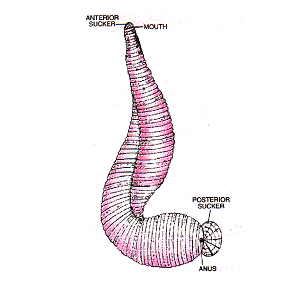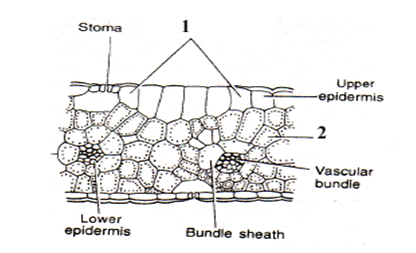Sample Paper of Biology 2014 for class 11, CBSE. Paper No.2
Sample Paper – 2014
Class – XI
Subject – Biology
Time: 3 Hrs M.M: 70
-
All questions are compulsory.
-
The question paper consists of 30 questions divided into four sections A, B, C and D. The section A contains 1–8 questions of 1mark each, the section B consists of 9-18 questions of 2 marks each, the section C has19-27 questions of 3 marks each and section D includes 28- 30 question of 5 marks each.
-
There is no overall choice. However, internal choice has been provided in one question of 2 marks each, in one question of 3 marks each and in all the three questions of 5 marks each. You are to attempt only one of the two alternatives in case of an internal choice question.
-
Wherever necessary, the diagrams drawn should be neat, bold and properly labeled.
Questions
Section – A
- Expand ICBN and ICZN.
- What are phanerogams? What is the other name for them?
- The term “cell is actually a misnomer”. Explain it in one sentence.
- Why is the spleen known as blood bank?
- Why slime moulds are called as fungus-animals?
- Which hormone is known as an immunosuppressive and a stress hormone?
- Name the enzyme secreted by the digestive system of a man to digest proteins in acidic and alkaline medium.
- What are liverworts? Why are they so called?
Section – B
- What is GERL system? Give two functions of the related cell organelle?
- What is a palindromic region of DNA? The adenine in a DNA molecule is 20%, Find out the amount of guanine in this DNA.
- A nerve cell releases 36 ATPs whereas a kidney cell releases 38 ATPs by complete oxidation of one gram mole of glucose. Explain why it is so?
- What is fungi imperfecti? Give out line classification of kingdom fungi.
- Give the botanical name of a plant of family fabaceae. Show the floral formula and floral diagram of the same plant.
- Name any one cranial nerve that controls eye ball movement. Is this nerve a sensory, a motor or a mixed one? Give the total number of pairs of motor and sensory nerves in a human being.
- Give the names of the three forms of the thalamus or floral insertion in the same order as depicted in the following diagrams giving one example of each type.
- Describe the functions of the endoplasmic reticulum.
- Draw the erythrocytic cycle of malarial parasite in a human being.
OR
What is the basis of division of protozoan protists? Give names of all groups of protozoan protest with basic structure of each.
- Identify the following animal and give the zoological name and phylum of this animal. Give two unique feature of the phylum it belongs to..
Section – C
- What is synapse? Explain how nerve impulse is transmitted across a synapse?
- Describe the induced-fit hypothesis for mode of enzyme action. Pepsinogen, a proteinase enzyme of stomach is an exoenzyme or an endoenzyme? How sulfa drugs help in inhibition of bacterial growth.
- What is meant by biological nitrogen fixation? Explain the process of biological nitrogen fixation. Give role of leghemoglobin in nitrogen fixation.
- In most plants the terminal bud suppresses the development of nearby lateral buds. What is this phenomenon called as? Name the phytohormone that can promote this phenomenon. Name a gaseous plant hormone and mention its three different actions on plants.
- The following diagram shows CO2assimilation in sugarcane leaves. Name the component marked as 1, 2, 3 and 4 in the diagram. Why this plant is said to have dimorphic chloroplasts.
- What are tidal volume and vital capacity? List any two categories of people which possess higher vital capacity.
- 25. Give the full form of ADH. Name the gland that secretes it. It is released under what condition of the body? What is its role in forming hypertonic urine? What is the disease caused due to the failure of its secretion?
- Name and explain three phases of Calvin cycle. Where does this cycle takes place ina cell.
- Give outline classification of chordates with example of each major group. Give two diagnostic characters of chordata.
OR
Give outline classification of plant kingdom with examples of each major group. Give two diagnostic characters of gymnosperms.
Section – D
- What are the two heart sounds? How are these sounds produced? What is the function of chords tendineae in a heart? Why right ventricular wall is thinner than the left ventricular wall?
OR
What is ascent of sap? Give the most acceptable theory of ascent of sap in higher plants.
- (i) Following is a diagram of a monocot leaf. Identify the components marked as 1 and 2. Give one function of each of these components.
(ii) Draw the T.S. of a dried mammalian bone.
(iii) What is cork cambium? Give the name of a tissue formed by cork cambium.
OR
Draw a well labeled diagram of digestive system of an earthworm. What is the role of gizzard and typhlosole in digestive system of an earthworm?
- (i) Every time fertilization occurs, the chromosome number is doubled. Yet the chromosome number of a species remains constant. Comment upon it.
(ii) Describe the sequence of the events in meiosis I. What are the special events of homologous chromosomes during meiosis?
(iii) A cell has 10 metacentric, 10 acrocentric.10 submetacentic and 10 telocentric chromosomes. Give number of V and I shape chromatids in anaphase of same cell.
OR
The two lamellar model can not explain the permeability of plasma membrane and passing of water through it. How is it explained by the fluid mosaic model? Give the name and draw the structure of a cell organelle that has double unit membrane.
Anil Rana
ranaanilsirsa@gmail.com
RANA’S BIO POINT
(The House of Biology)
15/143 SIRSA, HARYANA
Mob. 09416136110


























